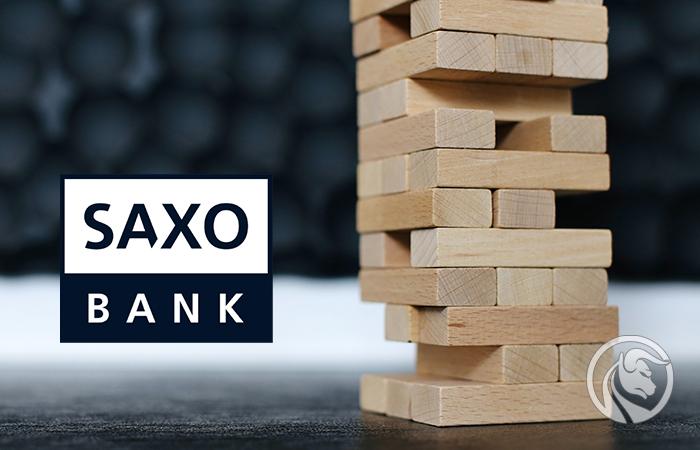A bank run raises the stakes. Saxo Bank's QXNUMX forecasts
We have the highest bond volatility in history, the war in Ukraine seems to be endless, and monetary authorities have raised interest rates to a level that is finally able to "break something". This is partly an element of the strategy, partly a consequence of focusing solely on combating inflation, ignoring other potential threats.
A fragile banking system
The harrowing market events in March also mean that the Federal Reserve chairman may, however decide on a political turn, even after tightening up the original stance, which was in itself the opposite of the existing policy. Surprised? And rightly so! Trying to make a forecast until the end of this year, we do not yet know whether the Fed will raise rates by 75-100 basis points to fight inflation, or will cut rates by 75 basis points to protect a fragile banking system and its foundation, i.e. a heavily burdened economic system. How did this come about, and did a few bank runs actually completely reset expectations for the future? Perhaps in relation to politics, but not in relation to inflation.
Since the bankruptcy of Long Term Capital Management (LTCM) in 1998, the world's central banks have tried to push markets to take more and more risks with low interest rates and increasing liquidity injections, without ever forcing heavily indebted banks and bolder investors to take a real loss ; the exception that actually confirmed this rule was the bankruptcy of Lehman Brothers and the ensuing extensive rescue package for banks during the global financial crisis.
As a result, in March this year, there was an intervention after the bankruptcy of Silicon Valley Bank (SVB), followed by the takeover of Credit Suisse by UBS, orchestrated and heavily funded by the Swiss National Bank. It even says to insure all deposits to prevent bank runs. Are all financial institutions now included in the 'systemic' category?
Inflation is "temporary"
What was the SVB mistake that caused the bank's stock to drop from over $100 to zero in just two days? The bank's executives managed their bond portfolio recklessly, steadily expanding it as more deposits poured in, while their regulator, the Fed, reassured, "Fear not! Inflation is temporary, it will fall below 2% soon!”
Clearly, the transient inflation thesis has failed, and Silicon Valley Bank has served as an illustration of the traditional panic - the kind where depositors, having lost confidence in the bank, all withdraw their funds at once. SVB had a very unusual deposit base, but many regional and smaller banks made a similar mistake by placing their funds in bonds with longer maturities, thus risking depositors fleeing to safer havens.
The supervisory authorities contributed to this situation by allowing the accounting concept of securities held to maturity, which enabled banks to recognize their bonds at purchase price, despite the fact that their value on the market was 20-30% lower. There was a panic to rescue all SVB depositors, regardless of their size; a new instrument of the Fed was also implemented - the Bank Term Funding Program (BTFP - seriously), enabling each bank to borrow liquidity based on a portfolio of securities held to maturity at their nominal price, instead of market price - and voila, problem solved! But is it really?
No - because what happens when a bank's financing costs on the liability side - the cost of its deposits - increase, even if depositors do not withdraw all their funds, but start looking for opportunities to deposit them at a higher interest rate? Banks have long ignored their customers, focusing on serving the huge financial engineering needs of the largest capitalization companies, private equity, venture capital and hedge funds. Now depositors have lost their patience. They are fed up with too little transparency, no service and no interest rate. Just a week ago, when the Fed was expected to raise short-term interest rates well above 5%, America's largest money-trading banks were paying zero interest on checking accounts!
The main problem with the current banking crisis so far is not the solvency of banks, but the question of whether banks will be able to continue to generate profits if funding costs increase and funds actually "will be moved elsewhere". How about, for example, a US 4,50-Month Treasuries with a yield of XNUMX%? Large banks can only function if they have enough liabilities and deposits to finance their assets. If customers withdraw money for any reason, especially in a panic, banks are forced to liquidate the assets. And that is what the current crisis is all about.
New alliances for balance in the world
But enough about the banking panic, although the above risk factors inevitably influenced the subject of this QXNUMX forecast, which was predicted before the March banking chaos, i.e. A game of Fragmentation. This is how we defined the global need to secure access to energy, other key resources, supply chains and computing power (primarily in the form of semiconductors), but also how new alliances are formed and shaped to restore balance to the world, moving away from Western dominance.
We could call it deglobalization, but the world is still global in terms of trade, it's just becoming more fragmented into specific blocks. Moving around these blocks will be crucial in the context of investing not only this year, but also in the next few decades.
Both strategy and tactics have never been more important as a fragmented and partially de-globalized world means new production capacity in areas where previously none existed to secure supply chains, which will require huge investments as well as the ongoing green transformation. On the other hand, other blocks may have overcapacity. Regardless, it will be essential to consider the Game of Fragmentation in investment decisions as the existing broad, fine-tuned and fully globalized networks are breaking down into new fragments and patterns.
About the Author
Steen Jakobsen, Chief Economist and CIO Saxo Bank. Djoined Saxo in 2000. As a CIO, he focuses on developing asset allocation strategies and analyzing the overall macroeconomic and political situation. As head of the SaxoStrats team, Saxo Bank's internal team of experts, he is responsible for all research, including quarterly forecasts, and was the founder of Saxo Bank's outrageous forecasts. Before joining Saxo Bank he cooperated with Swiss Bank Corp, Citibank, Chase Manhattan, UBS and was the global head of trade, currency and options in Christiania (currently Nordea). Jakobsen's approach to trading and investing is thought-provoking and is not afraid to oppose consensus. This often causes debate among the global market community. Every day, Jakobsen and his team conduct research in various asset classes, covering major macroeconomic changes, market movements, political events and central bank policies. With over 30 years of experience, Jakobsen regularly appears as a guest at CNBC and Bloomberg News.






















![Forex Club – Tax 9 – Settle tax on a foreign broker [Download the Application] Forex Club - Tax 9](https://forexclub.pl/wp-content/uploads/2024/02/Forex-Club-Podatek-9-184x120.jpg?v=1709046278)
![Trading View platform – solutions tailored to the needs of traders [Review] trading view review](https://forexclub.pl/wp-content/uploads/2024/03/trading-view-recenzja-184x120.jpg?v=1709558918)
![How to connect your FP Markets account to the Trading View platform [Guide] fp markets trading view](https://forexclub.pl/wp-content/uploads/2024/02/fp-markets-trading-view-184x120.jpg?v=1708677291)
![CRB index – one of the popular commodity market benchmarks [Guide] crb index](https://forexclub.pl/wp-content/uploads/2024/05/indeks-crb-184x120.jpg?v=1715055656)
![How to invest in ChatGPT and AI? Stocks and ETFs [Guide] how to invest in chatgpt and artificial intelligence](https://forexclub.pl/wp-content/uploads/2023/02/jak-inwestowac-w-chatgpt-i-sztuczna-inteligencje-184x120.jpg?v=1676364263)







![Izabela Górecka – “Success on the market depends not only on knowledge, but also on emotional stability” [Interview] Izabela Górecka - interview](https://forexclub.pl/wp-content/uploads/2024/04/Izabela-Gorecka-wywiad-184x120.jpg?v=1713870578)
![WeWork – the anatomy of the collapse of a company valued at $47 billion [WeWork, part II] wework bankruptcy story](https://forexclub.pl/wp-content/uploads/2024/04/wework-bankructwo-historia-184x120.jpg?v=1711729561)
![Adam Neumann – the man who screwed up Softbank [WeWork, part AND] adam neumann wework](https://forexclub.pl/wp-content/uploads/2024/04/adam-neumann-wework-184x120.jpg?v=1711728724)
![The most common mistakes of a beginner trader - Mr Yogi [VIDEO] Scalping - The most common mistakes of a beginner trader - VIDEO](https://forexclub.pl/wp-content/uploads/2024/03/Scalping-Najczestsze-bledy-poczatkujacego-tradera-VIDEO-184x120.jpg?v=1711601376)
![Learning patience: No position is also a position - Mr Yogi [VIDEO] Scalping - Learning patience - No position is also a position - VIDEO](https://forexclub.pl/wp-content/uploads/2024/03/Scalping-Nauka-cierpliwosci-Brak-pozycji-to-tez-pozycja-VIDEO-184x120.jpg?v=1710999249)
![When to exit a position and how to minimize losses - Mr Yogi [VIDEO] Scalping - When to exit a position and how to minimize losses - VIDEO](https://forexclub.pl/wp-content/uploads/2024/03/Scalping-Kiedy-wyjsc-z-pozycji-i-jak-minimalizowac-straty-VIDEO-184x120.jpg?v=1710336731)












Leave a Response